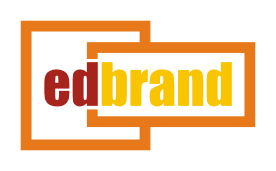How to make a stellar LinkedIn account
Since we were talking about LinkedIn this week, we thought of following up with another post on the best practices when making a LinkedIn account. While the linkedIn API is really good at telling you what all is needed here are top tips for high school students:
Photo:
You’ll need to include a photo to accompany your profile. This doesn’t necessarily have to be a professional photo, but it should be polished. Ideally, the background will be fairly plain, and you’ll be wearing a nice shirt or blouse. The photo should really just be a headshot, from about shoulder level up, and you should be looking at the camera. This is not the place for a group shot taken with your friends at the beach. Browse through other users’ profiles to see the style of photo most commonly included.
Headline:
Your headline is one sentence or phrase that captures what you’ve done and what you’re interested in doing in the future.
Summary:
Your summary will briefly describe what you’re passionate about doing, what you’re particularly skilled at, and what your goals are. It will basically expand on your headline to offer more specific details.
Experience:
This is essentially a resume of work experience. Include every job you’ve held so far, even if it was only part-time. Later, when you’re older and have amassed more work experience, you will trim down this section to include only jobs that are relevant to your career goals. For now, because you’re just getting started, you should include every job you’ve held.
For each job, include a brief description of your responsibilities and anything that you accomplished while there. You can even include photos or videos of your work if you have them, but keep in mind that these should serve as examples of the quality of work you’re capable of, not a series of selfies you took while serving as the beach parking attendant.
Honors and Awards:
Here, you can list any formal recognition you’ve received both in and out of school, from Employee of the Month at the local ice cream stand to National Merit Scholarship recipient. Don’t be afraid to brag in this section.
Projects:
This section should include any projects that you’ve worked on, in or out of school, in which you took a leadership role or otherwise excelled. For example, you could include your role as group leader in your school’s model bridge building competition even if your team didn’t win, or the darkroom that you built in your parent’s basement. This is the place to highlight unique achievements that were not formally recognized and do not fall into work or volunteer experiences.
Courses:
Don’t list every high school course you’ve ever taken here. Instead, focus on ones that highlight your skills and interests. For example, if you are interested in a career in computer tech, definitely include the coding course you took online or the AP Computer Science course you took at school.
Skills And Expertise:
Choose at least five skills that are relevant to both what you enjoy doing and the field you intend to pursue professionally. The people you connect with through LinkedIn will be able to endorse these skills to verify them for others who view your profile.
Organizations:
This is the section in which you list clubs or extracurriculars. Be sure to also include a brief description of what you did in each organization, especially if you took a leadership role.
Volunteer Experience:
Here, you’ll list any service projects or other volunteer work in which you’ve participated. Again, include a description of each experience. Even if you haven’t done much in terms of volunteer work, you can include any work for which you weren’t paid or compensated in this section, even if it was informal, like tutoring a younger student from your basketball team.
Education:
This section will usually start with your high school, but for older professionals it may not even start until college. You can include your high school classes and any summer programs or courses that you’ve taken outside of school.
Recommendations:
In this section, you can post recommendations that you’ve gathered from employers, teachers, or classmates. This section adds credibility to your profile. Never leave a job or a class in which you excelled and connected with the teacher without asking for a brief recommendation. You never know when it will come in handy.
Create A Customized Url:
When you open your LinkedIn account, you’ll be assigned a random web address for your LinkedIn profile. This will usually include a long line of numbers or random letters. You can customize the URL using these directions from the LinkedIn website.
Customizing your LinkedIn URL makes your profile easier to find and appears more polished and professional. It also shows that you have some technological savvy and pay attention to details.
Now I know these aren’t all the things that you can do on LinkedIn but if you just these, you will have a markedly competitive edge over the rest of the applicant pool. Do consider this and come chat with us if you have any more questions.
